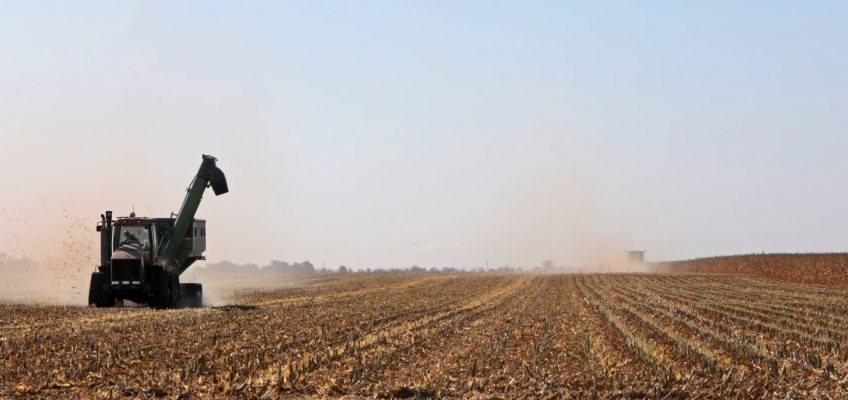FARGO — Agricultural land prices are continuing to rise in North Dakota and Minnesota despite challenges in the U.S. farm economy, experts say.
The U.S. Department of Agriculture priced North Dakota cropland at $2,710 an acre, 4.2% higher than the previous year. Minnesota’s cropland value was $7,000 per acre in August, up 7% from 2024, the USDA said in its August land values summary.
Experts expected land prices in Minnesota and North Dakota to correct themselves in 2024 or 2025, according to Troy Swee, an area sales manager for Farmers National Company. Farm income this year is expected to hit its lowest point since 2020, Farmers National Senior Vice President for Real Estate Paul Schadegg said, citing USDA forecasts.
Interest rates and farming costs also climbed this year, while commodity prices fell, Swee said.
“If you could go back in time and say, ‘We were going to decrease corn prices by 50% and double interest rates,’ everyone would have expected a bubble to burst, and it just didn’t,” Swee told The Forum. “There’s just a lot of demand for farm ground with these farmers.”
North Dakota and Minnesota follow a national trend, as cropland prices in the U.S. steadily climbed over the last 15 years, from $2,980 an acre in 2011 to $5,830 in 2025, the summary said. Pastureland prices also rose during the same time period, from $1,070 per acre to $1,920 this year.
The North Dakota Department of Trust Lands Annual Land Survey estimates cropland prices are averaging higher than USDA numbers. Per-acre price tags rose from $2,519 in 2022 to $3,534 this year, according to the survey published in April by North Dakota State University Extensionf Service.
That’s 40% growth over the last four years and a 10.55% increase from 2024, according to NDSU Extension. North Dakota’s average pastureland prices grew more than 50% since 2021, the survey said.
High demand for land and limited available property for sale are contributing to rising prices, Swee said. A record number of farms in the U.S. sold in 2022 and 2023, he said.
“Since then, inventories have been down,” he said. “A year ago, we sold about 25% less farms across the nation.”
The number of farms sold this year should remain flat compared to 2024, he said.
Today’s land prices are also an indicator of what happened several years ago, said Bryon Parman, an associate professor and agricultural finance specialist at NDSU. Farmers reported high net incomes, including a record year in 2022, he said.
Along with more cash on hand and low interest rates, producers felt more comfortable investing in land, Parman said.
“You get an increase in demand, and you’ve had a couple years in a row of strong net income years, and that drives prices higher,” he said.
Cropland prices in the south Red River Valley are the highest in North Dakota, according to NDSU. Prices in Cass, Traill and Richland counties averaged $6,471 per acre, up 7% from last year, the NDSU survey said.
About 75% of farmland is being purchased by local farmers, Swee said. Local investors are also buying farmland to expand their portfolios, while outside groups or corporations are getting very little farmland, he said.
“They’re getting probably around 5% to 7%,” Swee said of out-of-state investors. “They’re always at auctions, and they’re always present online, but they’re generally looking for deals.”
Swee noted record profits in the livestock industry. Feeder cattle hit an all-time high of $3.80 a pound by noon Tuesday.
“This is the best year for cattle producers ever,” Swee said.
U.S. cattle numbers have declined for six years due to drought, said Tim Petry, associate professor and livestock economist at NDSU. Farmers didn’t have enough pasture to feed cattle and had to sell them, he said.
As of July 1, the U.S. reported it had 28.7 million head of beef cattle, slightly up from last year but near 60-year lows, according to the USDA.
“It means we have a very low supply of beef,” Petry said.
The demand for all meat has gone up, he said. The hype of not eating meat has changed to including more protein in diets, he said.
“Meat is back in vogue,” Petry said. “That increases the demand for meat, and so meat prices have been going up.”
Pastures are returning to normal, and producers want to bring herd numbers back up, he said. That causes land prices to go up, he said.
The biggest threat to land prices is the current state of the agricultural economy, Swee said. With lower commodity prices, farmers may sell land to balance budget sheets, he said.
That could “put pressure on these land markets to come down,” he said.
The weakness in commodity prices and the rise of production costs could slow land prices, Parman said.
“At least for the next year, I don’t think we’re going to see a decline in farmland prices, but I do think we’re certainly going to see a slowdown in increase,” he said.
Related Articles
California engineer wins pumpkin contest with 2,346-pound gourd
Letters: Two big police officers, one lost little girl
Other voices: Soybean farmers feel the effects of Trump’s trade war
Letters: It’s not left or right that matters most, but the vengeful alienation
Trump’s trade battle with China puts US soybean farmers in peril


Leave a Reply